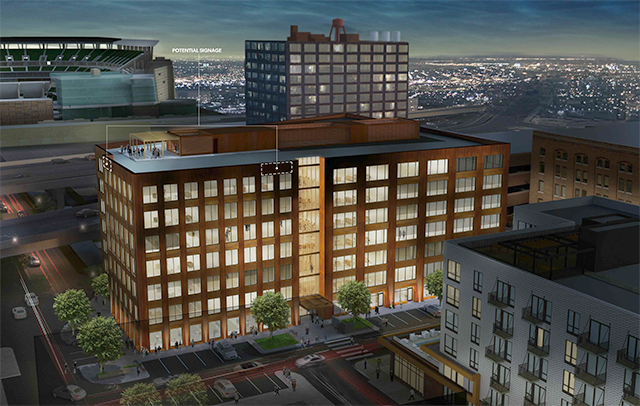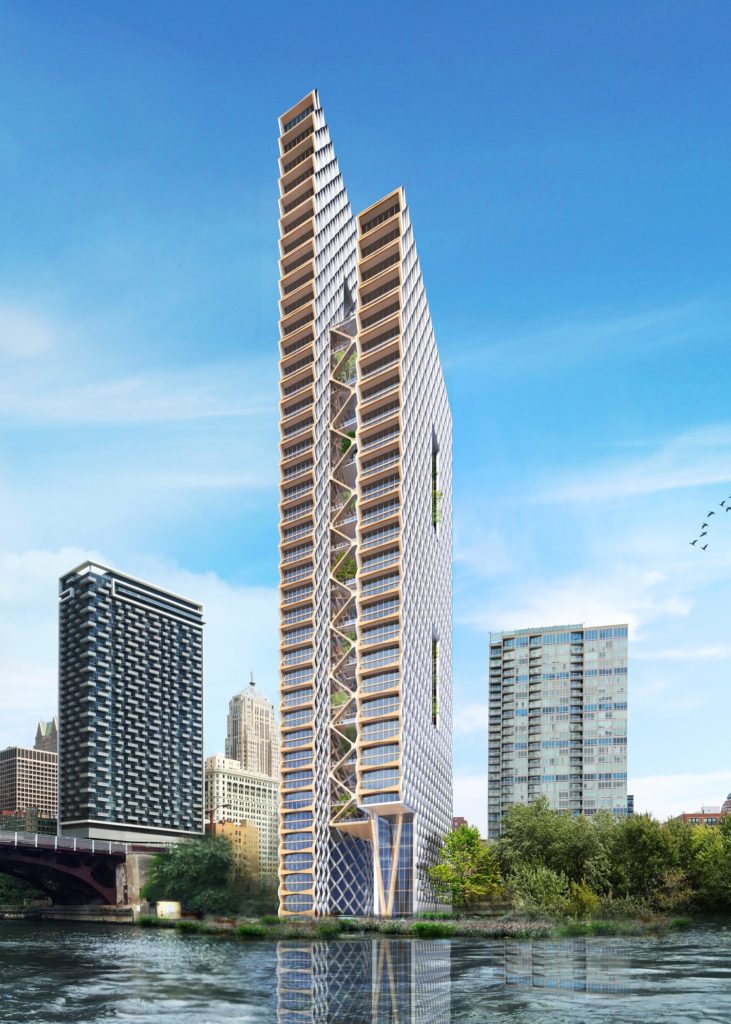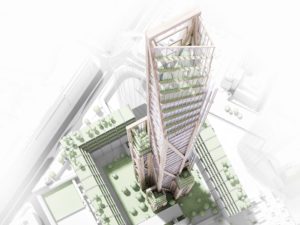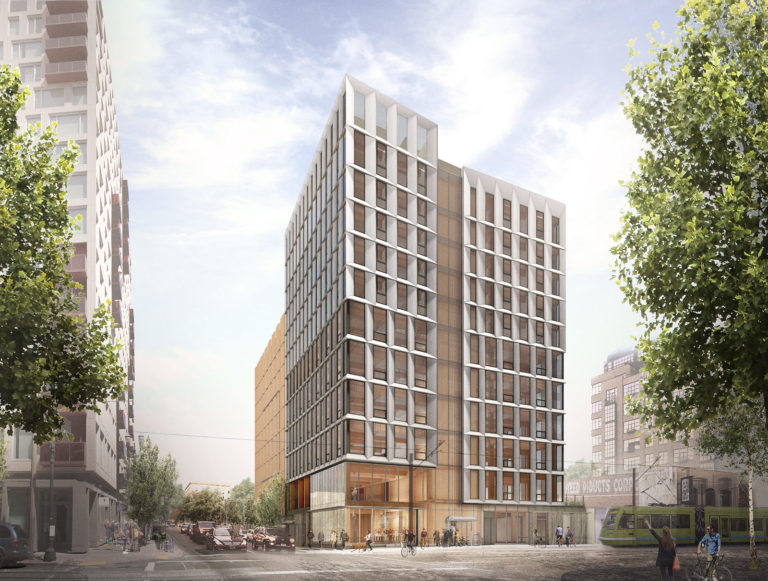
Designed by Michael Green Architecture and completed in 2016, The 7-story T3 building in Minneapolis’ North Loop is currently the largest wooden structure in the country.
But that may not be the case for long.

An 80-story skyscraper made of wood is being discussed in Chicago. It’s just a concept, for the time being, but the River Beech Tower is a pretty bold look at the future of big city building, especially in a city famous for its skyscrapers; notorious for their size, and their dependence on steel and cement.
Across the pond in London, a similarly-sized skyscraper called Oakwood Tower is already in the works. Also in England, famed architect Zaha Hadid’s firm is building an all-wood soccer stadium. And Stockholm, Sweden has plans for residential building made of wood that would be the tallest in the city.

This isn’t the first time wood has been selected for building prominent structures: the Superior Dome in Michigan, the Tamedia Office Building in Zurich, and Forté in Australia (which was the tallest wooden structure in the world when it was completed in 2012) are all impressive lumber-inspired structures.
Wood building new again
But these projects are part of a growing trend across the world, steadily gaining traction especially in the United States: Two other projects, Framework, in Portland, and the 475 West 18th in New York City, benefited from a $3 million grant after winning the Tall Wood Building Competition prize, designed to spur interest in building with wood.
The Framework was just granted a building permit on Tuesday (6/6/17), and, at twelve stories, will overtake the T3 as the United States’ largest timber building once completed.

But it’s not just size that matters, though that does make a statement; it’s about the relationship the building has to the landscape. The cityscape. How it looks and feels when you walk by, or work and live inside.
As Michael Green says about building with wood,
“Like snowflakes, no two pieces of wood can be the same anywhere on earth… Mother Nature has fingerprints in our buildings.”
It gives a certain feel, something unique to an urbanity that, at least in American architecture, has been dominated by the solid, less-forgiving, and less-whimsical nature of cement and steel.
Wood is incredibly pleasant to the eye and the touch.
But it’s also not simple aesthetics that make T3 and other lumber projects so special, especially as architects look to the future design of cities all across the world. Wood buildings are also incredibly sustainable, environmentally-friendly structures that can help reverse the effects of climate change.
From the T3 website,
“By using heavy timber construction, T3 reduced greenhouse gas emissions equivalent to operating a home for 430 years.”
The production and processing of wood is highly efficient in energy usage, giving wood products a very low carbon footprint.
Wood is also a natural insulator. Air pockets within the cellular structure make it up to 15x more efficient than masonry, and 400x more than steel. This cuts down on heating costs, and, once again, the carbon footprint of the building.
And, if you think supporting the environment is a bunch of bunk, it also supports local jobs: as woodwork is often done onsite or nearby, it’s a great way to support local craftsmen and carpenters, as well as builders and construction workers. Cost-efficiency is also the name of the game, as studies of building and framing systems have determined that timber frames can often be the cheapest way to go.
Environmentally-friendly and business-friendly?
The future is now. We just never knew it was going to be made of wood.
Read next: Andersen Windows showcase green initiatives in new buildings
















